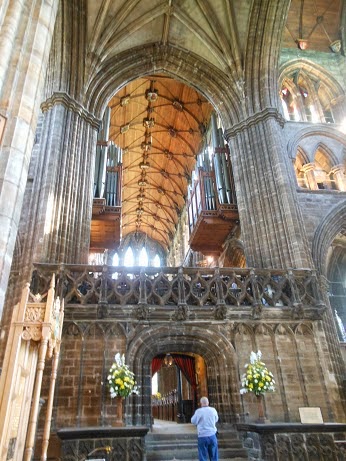 |
| Stonehenge |
 |
| Map Room |
 |
| Slide Rule |
 |
| Actors in Testament of Youth |
 |
| Bodleian Library |
 |
| St. Mungo's Cathedral |
 |
| Sculpture in Religious Life Museum |
 |
| St. Andrews Cathedral |
 |
| DM at the Morris tomb |
Cathedrals, chapels, abbeys, minsters and churches: these are all names for places of worship, but DM wondered how these designations are different or alike. A cathedral is presided over by a bishop, so it serves as the central church of a diocese, conference, or episcopate. A minister is the church of a monastery even though the monastery may have ceased to exist. An abbey is a specialized building under the direct supervision of its abbess (the spiritual mother) and/or the abbot (the spiritual father); the abbey is where the religious (i.e. monks or nuns) live, work, pray
 |
| St Giles Cathedral |
And if the places we’d seen weren’t old enough, we had to see Hadrian’s Wall. It was built by
 |
| Hadrian's Wall |
The last church we visited was York Minster and what a great place to end! This amazing
 |
| York Minster Clock |
©2013 NearNormal Design and Production Studio - All rights including copyright of photographs and designs, as well as intellectual rights are reserved.
No comments:
Post a Comment